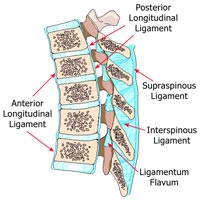The Gate of Fate
/ kidney system. The kidneys regulate fluids in the body and they also produce jing. Jing is that aspect of qi which comprises the self reproductive quality in nature, it is stored in the kidney system where it is available both for making babies and for making repairs. Jing produces new tissue when we are injured, bone, muscle, scabs, etc. It is our ancestral memory.
kidney system. The kidneys regulate fluids in the body and they also produce jing. Jing is that aspect of qi which comprises the self reproductive quality in nature, it is stored in the kidney system where it is available both for making babies and for making repairs. Jing produces new tissue when we are injured, bone, muscle, scabs, etc. It is our ancestral memory.The number one purpose for studying martial arts is to not have a rigid fate. I wish more schools explained this up front. This idea is closely linked to the area known as the mingmen. When the lower back is stiff and deficient we literally have a rigid fate.
How is it possible that a person gets stuck on an idea in their twenties and despite heaps of evidence which accumulates during their lifetime which contradicts that idea, they still cling to it. Traditionally these rigid ideas or notions or ideologies have been conceived as hungry ghosts or wandering demons that are invisible to us but slowly eat away at our kidneys whenever we "check out." By "checking out" I mean staying up too late, forgetting to eat, taking drugs, or unleashing political rants. The day after we become food for little hungry demons, our lower back gets stiff and starts to hurt.
 I don't think there is a perfect correlation between physical rigidity and a person's inability to freely make choices based entirely on what is real. There is some correlation, but I've met some amazing people with pretty screwed up bodies. Still, sit-ups are dumb. Six-pack abdominal muscles are O.K. against a boxer with gloves on and that's it. Like the "core-strength" fad, sit-ups break the unity of a person's body, they restrict the freedom of the torso and they tighten the breath. Why choose a rigid fate?
I don't think there is a perfect correlation between physical rigidity and a person's inability to freely make choices based entirely on what is real. There is some correlation, but I've met some amazing people with pretty screwed up bodies. Still, sit-ups are dumb. Six-pack abdominal muscles are O.K. against a boxer with gloves on and that's it. Like the "core-strength" fad, sit-ups break the unity of a person's body, they restrict the freedom of the torso and they tighten the breath. Why choose a rigid fate?
 Martial Development
Martial Development
 move just one part. Each vertebral-body (bone) can tilt forward or backwards somewhat like Venetian blinds.
move just one part. Each vertebral-body (bone) can tilt forward or backwards somewhat like Venetian blinds. Figure 10. A sagittal view of the human thoracic spinal cord, showing the (1) intervertebral discs, (2) vertebral bodies, (3) dura, (4) epidural space, (5) spinal cord, and (6) subdural space. A thick ligament, the anterior longitudinal ligament forms the anterior border of the spinal column. The posterior longitudinal ligament form the posterior border of the vertebral bodies.
Figure 10. A sagittal view of the human thoracic spinal cord, showing the (1) intervertebral discs, (2) vertebral bodies, (3) dura, (4) epidural space, (5) spinal cord, and (6) subdural space. A thick ligament, the anterior longitudinal ligament forms the anterior border of the spinal column. The posterior longitudinal ligament form the posterior border of the vertebral bodies. Kick-boxing gym last night where fighters were jumping rope and doing endurance training. I'm willing to bet that any professional ballet dancer can beat these fighters in an endurance match.
Kick-boxing gym last night where fighters were jumping rope and doing endurance training. I'm willing to bet that any professional ballet dancer can beat these fighters in an endurance match. (think pain), contortion is a great option! San Francisco now has a world class contortion training program,
(think pain), contortion is a great option! San Francisco now has a world class contortion training program, 